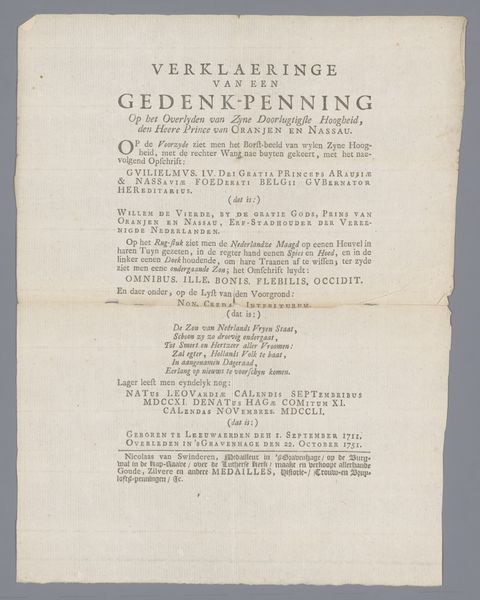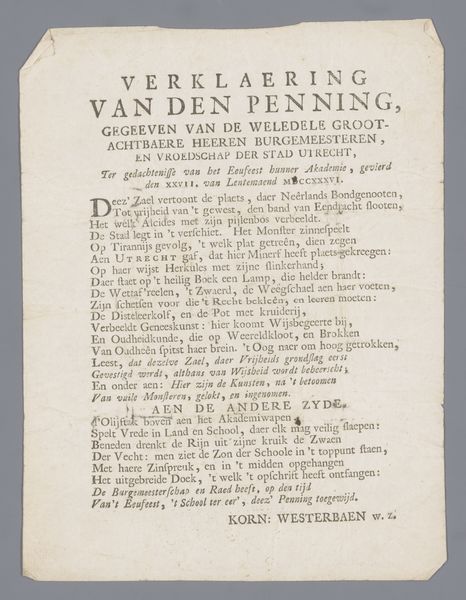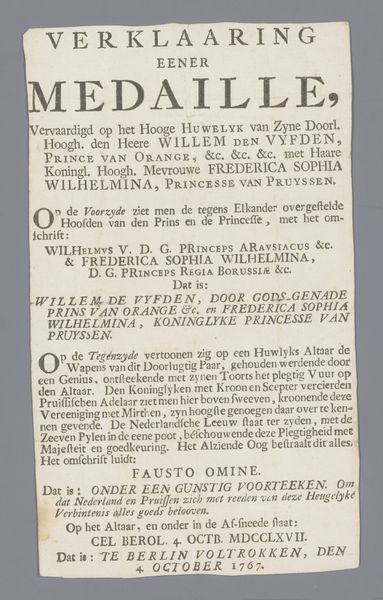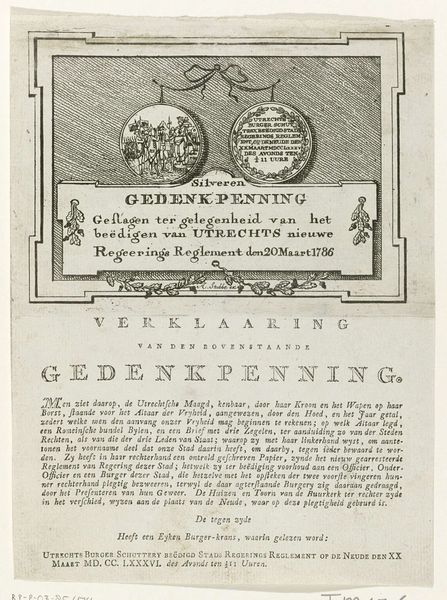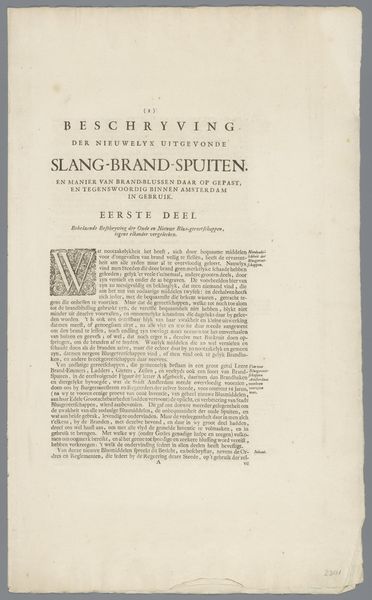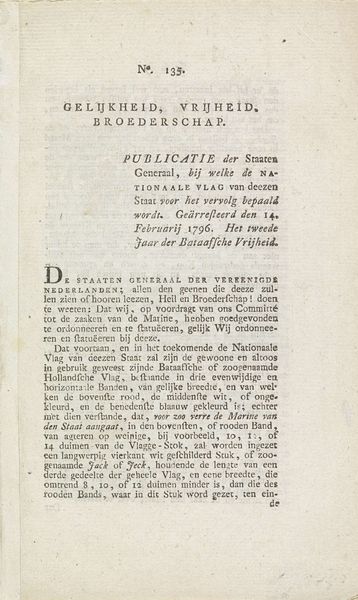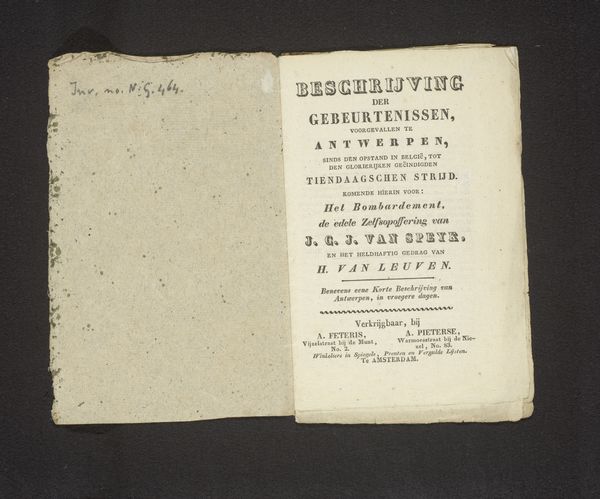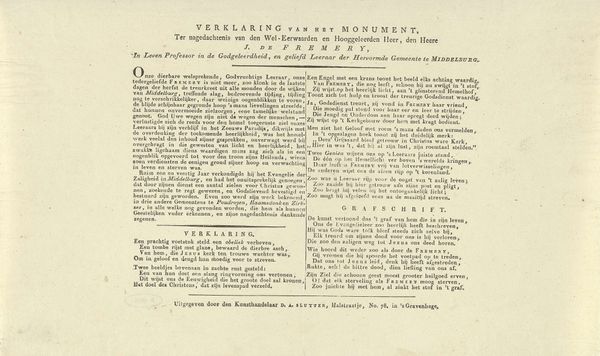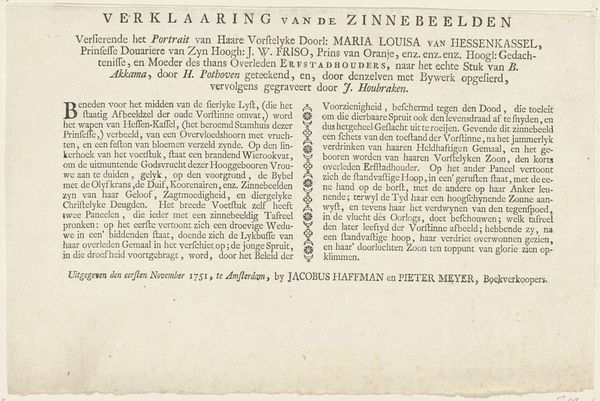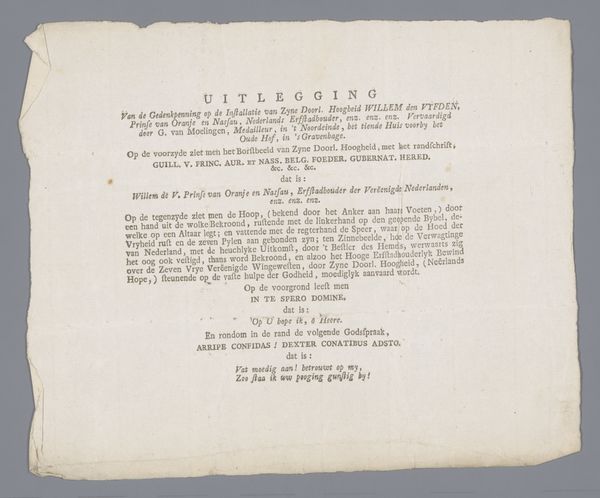
Verklaring van de penning door Martinus Holtzhey geslagen op de inhuldiging van Willem IV, prins van Oranje-Nassau, als erfelijk stadhouder van de Nederlanden 1747
0:00
0:00
print, typography
#
baroque
#
dutch-golden-age
# print
#
typography
#
classical type
#
calligraphy
Dimensions: height 21.6 cm, width 15.7 cm
Copyright: Rijks Museum: Open Domain
This is a printed explanation of a commemorative coin designed by Martinus Holtzhey, a medallist in Amsterdam, likely made shortly after 1747. Though on paper, it's important to consider the materials and processes involved in the coin's production. Minting coins was a sophisticated industrial process even then, involving specialized labor and machinery. The precious metals, gold and silver, speak to the power and wealth associated with William IV's inauguration as hereditary Stadtholder of the Netherlands. The coin itself, now lost to us, would have been a token of political authority, connecting the prince to celestial imagery, invoking the theories of Newton and Kepler to suggest a divinely ordained right to rule. The print, then, is a secondary artifact, explaining the symbolism of the primary object, and extending its reach to a wider audience through the printing press. Both coin and explanation reflect the intricate relationship between power, production, and representation in the 18th century.
Comments
No comments
Be the first to comment and join the conversation on the ultimate creative platform.
